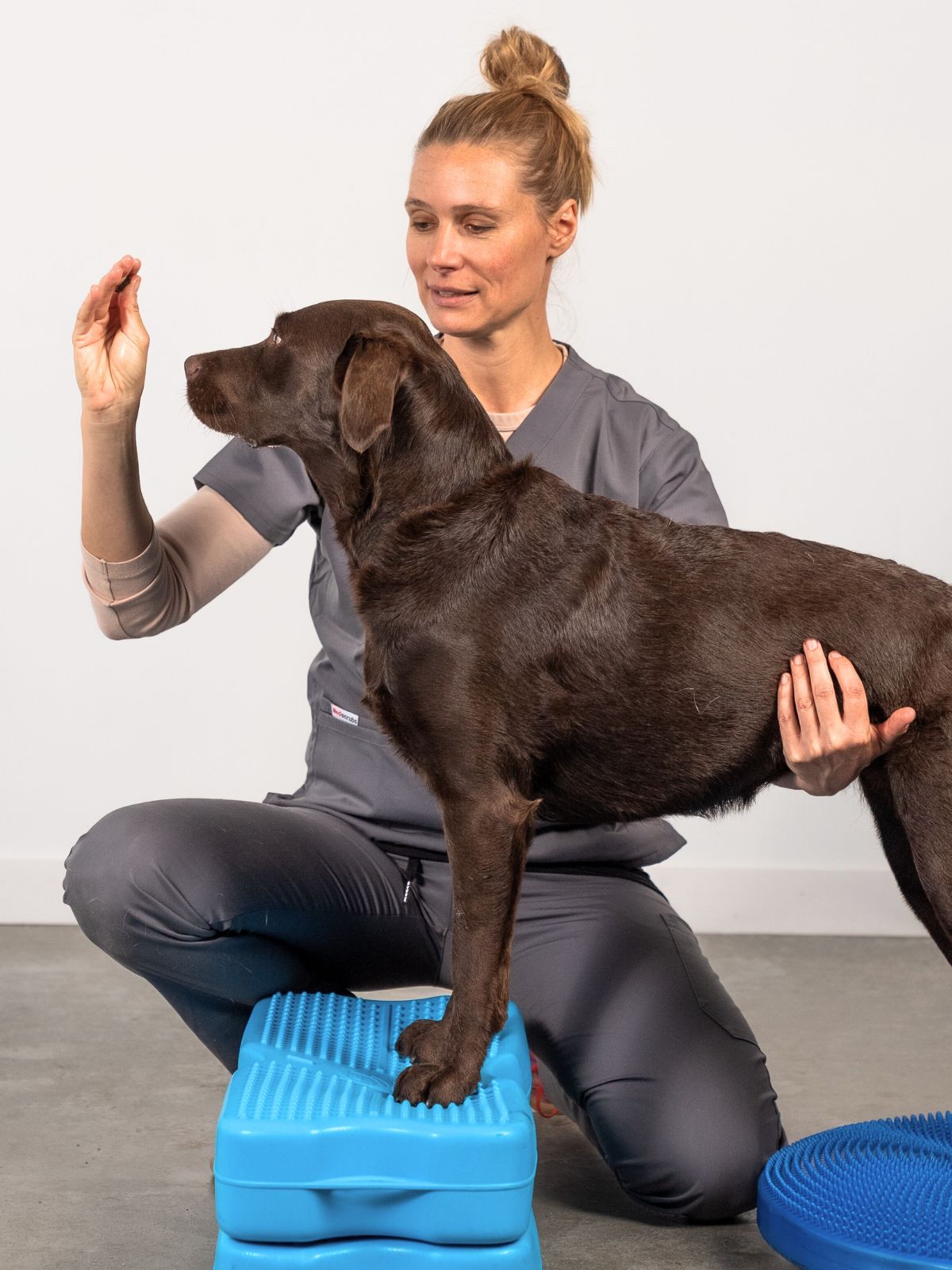Therapeutic Exercise For Dogs
Targeted, condition-specific exercises to restore strength, neuromuscular control, and functional mobility
What Is Therapeutic Exercise?
Therapeutic exercise is a structured, clinically prescribed intervention used to improve neuromuscular function, rebuild strength, and retrain movement in dogs recovering from orthopaedic surgery, managing chronic musculoskeletal conditions, or living with neurological disorders. These exercises are designed to address specific deficits such as muscle weakness, joint instability, impaired proprioception, poor coordination, and altered gait patterns.
Unlike general activity such as daily walks and plays in the park, therapeutic exercise is goal-driven and forms a core part of your dog’s rehabilitation plan—tailored following a detailed clinical assessment of their condition, mobility level, and functional needs.
At Paws4Paws, we deliver therapeutic exercise programs in the home environment, ensuring low-stress delivery and real-time adaptation based on your dog’s progress.
How Therapeutic Exercise Can Benefit
Therapeutic exercise is a cornerstone of evidence-based canine rehabilitation, forming the foundation of functional recovery and long-term musculoskeletal health. It plays a vital role in restoring physical capacity, neuromuscular function, and biomechanical efficiency across a wide range of conditions—including orthopaedic injuries, post-surgical recovery, neurological deficits, and age-related decline.
By targeting key elements such as motor control, postural stability, proprioception, and joint kinematics, therapeutic exercise enhances muscular recruitment patterns, optimises joint loading, and improves movement coordination. These interventions are not only corrective but also preventative—reducing the risk of secondary complications such as muscle atrophy, contracture formation, and compensatory strain on adjacent joints or soft tissues.
Structured, progressive exercise plans are tailored to the individual dog’s diagnosis, functional limitations, and stage of healing. In addition to strength and endurance training, programs may include dynamic balance activities, task-specific functional drills, gait retraining, and core stabilisation strategies. These components work synergistically to promote tissue repair, support joint integrity, and restore movement confidence in daily activities.
Whether the clinical goal is to recover post-injury or post-surgery, manage a chronic condition, or preserve mobility in ageing dogs, therapeutic exercise ensures rehabilitation remains measurable, meaningful, and outcome-focused—guided by objective assessment and continuous functional re-evaluation.
When Therapeutic Exercise is Recommended
Therapeutic exercise is prescribed for dogs with functional deficits related to injury, surgery, chronic orthopaedic conditions, or neurological impairment. It addresses key impairments such as muscle weakness, joint instability, balance deficits, and abnormal gait patterns. By targeting specific clinical goals, therapeutic exercise supports recovery, prevents secondary complications, and promotes long-term mobility and independence.
Therapeutic exercise is commonly recommended for dogs with:
-
Post-surgical recovery (e.g. TPLO, patellar stabilisation, spinal surgery)
-
Neurological conditions (e.g. IVDD, FCE, degenerative myelopathy)
-
Muscle atrophy or generalised weakness
-
Chronic joint conditions like arthritis or hip/elbow dysplasia
-
Poor coordination, balance deficits, or altered gait
-
Age-related decline or loss of mobility
-
Athletic conditioning and injury prevention


